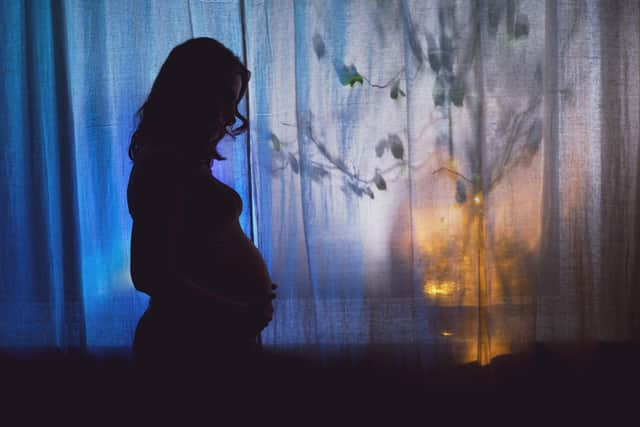SNP promises on women's health ring hollow - Martyn McLaughlin
At the weekend, I wrote a story detailing the consequences of the shameful paucity of provision surrounding second trimester abortions across Scotland. I spoke to several women forced to travel to London for terminations. Some did so with less than 24 hours notice after only discovering they were pregnant at a late gestation. Others paid thousands of pounds in travel and accommodation costs which they never got back.
What united their stories were feelings of isolation, sadness, and above all, a sense of dismay that in 2022, other women are having to endure the same trauma as they did. Yet the truth is that there are other shortfalls and geographical disparities when it comes to abortion care.
Advertisement
Hide AdAdvertisement
Hide AdDespite the rollout of telemedicine across some major health boards, such as NHS Greater Glasgow and Clyde and NHS Lothian, it remains the case that for many women throughout the country, the home use of abortion medication is not a choice they have at their disposal.
Clare Murphy, chief executive of the British Pregnancy Advisory Service, has acutely observed how in five health board areas - home to more than 325,000 women of reproductive age - less that five per cent of all abortions last year were undertaken using the safe, effective, legal method of taking mifepristone and misoprostol at home.
This gap in provision is a cause for significant concern. Not only is the use of telemedicine preferred by many women, but the ability to access such care in the comfort of their own home has brought down the average gestation at which women are ending their pregnancies, lowering the risk of any complications.
You need only look at the trends in Scotland’s islands to realise the impact of giving women an option which does not involve travel. Across Shetland, Orkney, and the Western Isles, terminations at the earliest gestations have risen from 66.2 per cent to 84.8 per cent of the total. Unfortunately, not enough women have the same choices open to them.


All of this would appear to feed into a familiar weakness on the part of First Minister Nicola Sturgeon’s government. While its capacity for grand, inspiring policy announcements is unparalleled, too often the reality is altogether more underwhelming.
It was evident amid the self-congratulation which greeted the incorporation of the United Nations Convention on the Rights of the Child into Scots law, despite the fact that vulnerable and at risk children are being detained in police custody due to a lack of more appropriate accommodation.
Now, on the issue of abortion care, the parallels are uncanny. It is nearly six months since the government published Scotland’s first ever women’s health plan, billed as the first step on a journey towards making Scotland a global exemplar when it comes to women's health.
If you were wondering just ambitious its goals are around abortion care, the strategy classes a review of the provision of services as a “long term” aim, to be delivered within three years. World leading, indeed.
Advertisement
Hide AdAdvertisement
Hide AdLast week, I was passed government correspondence which indicated that work is underway to gather information on boards’ services, the government has not undertaken any analysis of the situation, or commissioned any external studies.
If a cursory review of the existing provision is not even deemed a priority, how long will it take to remedy the lack of second trimester care? In any case, it is laughable that such an exercise should take years in the first place.
It is also disingenuous on the part of the government to infer in the plan that it has no evidential starting point with which to justify the reallocation of resources or the amendment of policies around this issue.
In 2014, it funded and commissioned an extensive study carried out by leading experts in women’s reproductive health, including consultant gynecologists and obstetricians working in the NHS. They were asked to assess women’s access to, and experiences of, late stage abortion care, and their conclusions were damning.
One woman who was 17 weeks’ gone was told by her GP that she was “too late” as the foetus was “a baby now.” Another woman who requested an abortion at 13 weeks eventually had to go to England because delays meant she went over her local health board’s gestational limit. Both she and other women who made round trips of hundreds of miles spoke of a familiar emotional and financial strain.
In a damning conclusion, the study’s authors observed: “Women in this position are forced into a Catch-22, in that the stigma of abortion not only creates a need for secrecy, but also leads to restrictions on provision that force disclosure, the prospect of which may result in some women’s continuing pregnancies with which they cannot cope or that they do not want.”
So after paying for this research, what exactly did the Scottish Government do with it? The answer is a mystery, but the lived experience of the women I spoke to who have had second trimester abortions makes it clear that the situation has not improved.
It is only fair to point out that the dreadful access to late stage abortion across Scotland predates both the SNP’s time in power and devolution. But abortion law is now Holyrood’s responsibility. It may be that the issue is addressed by Ms Sturgeon and Maree Todd, the women’s health minister, at an upcoming summit. Its primary purpose to to scrutinise the harassment women face from protesters when attending abortion clinics, yet it is clear that the problems go deeper.
Advertisement
Hide AdAdvertisement
Hide AdEarlier this year, Ms Sturgeon opened a Holyrood debate on International Women’s Day, where she said that reckoning with historic injustice is a vital part of building a better country. Quite so. It is time for her government to act.
